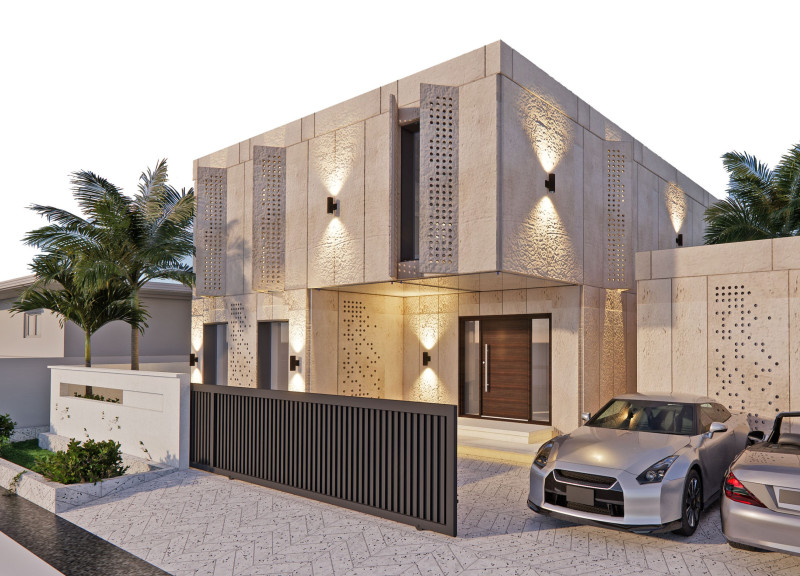5 key facts about this project
The building is situated in an urban area characterized by a mix of historical and modern architecture, showcasing a design that respectfully dialogues with its surroundings. Its form is a blend of angular and organic shapes, demonstrating a sensitivity to the existing language of the neighborhood while introducing modern elements that signify innovation. The façade employs a diverse palette of materials, including glass, steel, and locally sourced timber, which not only promotes sustainability by reducing transportation costs but also adds texture and warmth to the visual narrative of the building.
The design of the project prioritizes functionality and user experience, addressing the needs of its occupants while providing spaces that encourage interaction and engagement. The main entryway is designed to be welcoming, featuring expansive glass doors that provide transparency and a visual connection between the interior and exterior environments. This transparency is a recurring theme throughout the building, as large windows are strategically placed to enhance natural light penetration, reducing reliance on artificial lighting and promoting energy efficiency.
Internally, the spatial organization reflects a thorough understanding of flow and accessibility. The layout promotes a seamless transition between different areas, facilitating both public and private interactions. Open-plan designs in communal spaces are balanced by designated areas for focused activities, allowing for versatility in use. This arrangement ensures that the building can cater to a diverse range of activities, from social gatherings to individual work, thereby embodying a multipurpose ethos.
Unique design approaches are evident in the building’s roof structure, which incorporates green elements. This aspect not only contributes to the building’s environmental sustainability by managing stormwater runoff and reducing urban heat but also creates additional recreational areas that enhance the quality of life for users and local residents. The roof garden acts as an urban oasis, providing a space for relaxation and fostering biodiversity within an otherwise concrete landscape.
Materiality plays a significant role in the overall expression of the project. The choice of materials has been made with careful consideration of durability, insulation properties, and ecological impact. For instance, the incorporation of reclaimed wood reflects a commitment to sustainability, and its warm tones create an inviting ambiance. The rigorous selection of high-performance glass ensures thermal comfort while minimizing energy consumption.
As with any architectural endeavor, the project’s design outcomes speak volumes about contemporary architectural ideas and trends. The balance between expressive forms and functional spaces demonstrates the potential for architecture to create inviting environments that enhance human experiences. By prioritizing accessibility and interaction, the design encourages communal activities while also providing refuge for solitary moments.
In addition to the architectural merits, this project has implications for urban design, illustrating how thoughtful architecture can invigorate neighborhoods and foster community cohesion. The careful consideration of the surrounding environment in the design process reflects an understanding of architecture as an agent of social change.
To explore the nuances of this project further, readers are encouraged to delve into its architectural plans, architectural sections, and architectural designs. These elements will provide deeper insights into the thoughtful ideas that have shaped the overall concept and functionality of the project. Understanding these aspects will enhance appreciation for how this architectural endeavor resonates within both its immediate context and the broader field of contemporary architecture.


 Zeeshan Sarwar
Zeeshan Sarwar 























